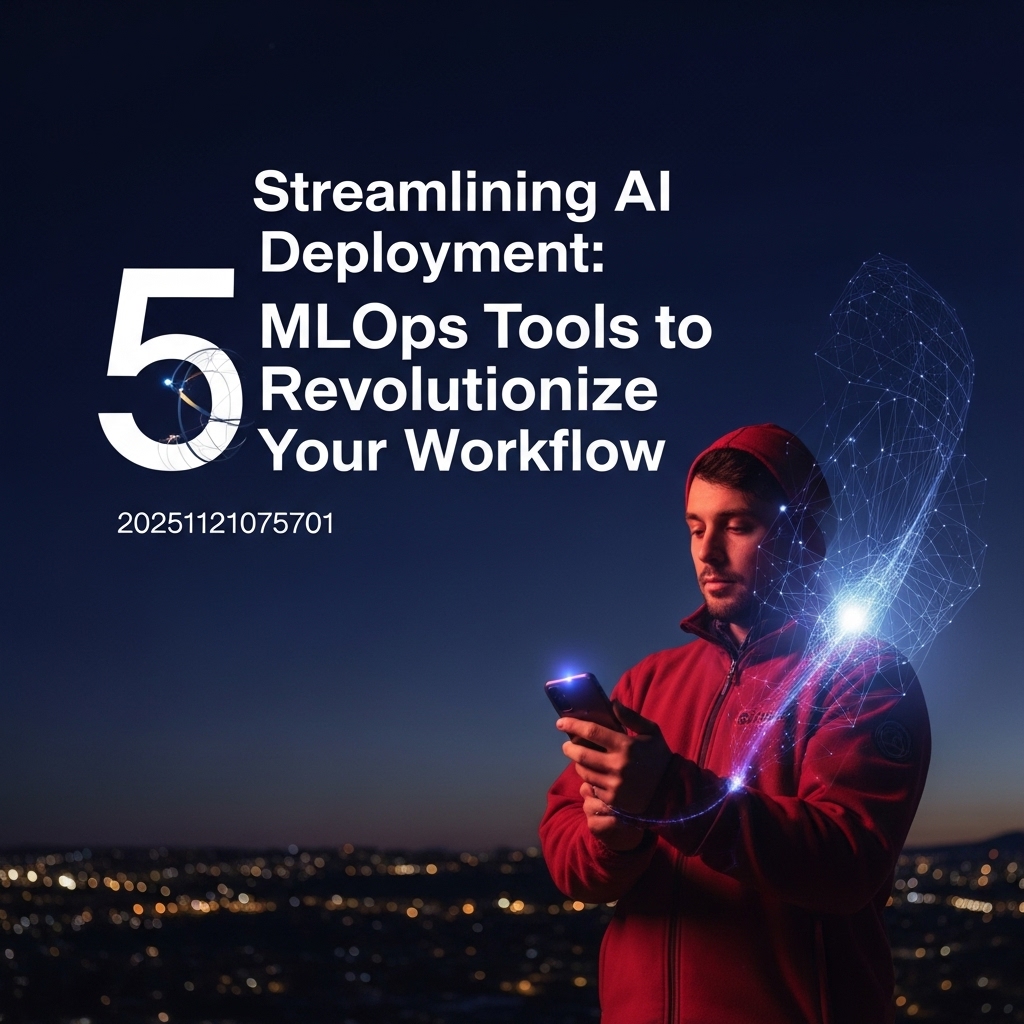
Introduction to Streamlining AI Deployment
As the field of artificial intelligence (AI) continues to evolve, the demand for efficient and reliable deployment of machine learning (ML) models has never been more pressing. The process of taking an ML model from development to production, known as MLOps, is complex and involves multiple stages, including data preparation, model training, testing, deployment, and monitoring. Streamlining this process is crucial for organisations to maximise the benefits of AI and minimize the risks associated with model deployment. In this article, we will explore the concept of MLOps, its challenges, and introduce 5 MLOps tools that can revolutionize your workflow.
Understanding MLOps and Its Challenges
MLOps is a systematic approach to building, deploying, and monitoring ML models in production environments. It combines principles from DevOps, data engineering, and machine learning to create a streamlined process for model deployment. However, MLOps poses several challenges, including data quality issues, model drift, a lack of collaboration between data scientists and engineers, and scalability. For instance, data quality issues can lead to biased models, while model drift can cause models to become less accurate over time. Furthermore, the lack of collaboration between data scientists and engineers can result in models that are not deployable in production environments.
MLOps Tools for Streamlining AI Deployment
Fortunately, several MLOps tools are available to address these challenges and streamline the AI deployment process. These tools can be categorised into several types, including data management, model development, model deployment, and monitoring. Here are 5 MLOps tools that can revolutionise your workflow:
1. TensorFlow Extended (TFX): TFX is an open-source MLOps platform developed by Google. It provides a set of tools and libraries for defining, deploying, and managing ML pipelines. TFX includes components such as data ingestion, data validation, model training, and model serving.
2. MLflow: MLflow is another popular open-source MLOps platform. It provides a set of tools for managing the end-to-end ML lifecycle, including data management, model development, model deployment, and monitoring.
3. Kubeflow: Kubeflow is an open-source MLOps platform built on top of Kubernetes. It provides a set of tools for deploying and managing ML workflows, including model development, model deployment, and monitoring.
4. Amazon SageMaker: Amazon SageMaker is a fully managed MLOps platform provided by AWS. It provides a set of tools and services for building, deploying, and managing ML models, including data preparation, model training, and model deployment. 5. DVC: DVC is an open-source tool for data version control and management. It provides a set of tools for managing data pipelines, including data ingestion, data validation, and data versioning.
Benefits of Using MLOps Tools
The use of MLOps tools can bring several benefits to organizations, including improved collaboration, increased efficiency, and reduced risk. For example, MLOps tools can provide a standardized process for model development and deployment, reducing the risk of errors and inconsistencies. Additionally, MLOps tools can provide real-time monitoring and feedback, enabling organizations to quickly identify and address issues with their models. Furthermore, MLOps tools can provide automation and scalability, enabling organisations to deploy models quickly and efficiently.
Real-World Examples of MLOps in Action
Several organizations have successfully implemented MLOps tools to streamline their AI deployment workflows. For instance, Netflix uses a combination of TFX and Kubeflow to deploy and manage its ML models. Uber uses MLflow to manage its ML lifecycle, including data management, model development, and model deployment. Google uses TFX to deploy and manage its ML models, including models for search, ads, and recommendations.
Best Practices for Implementing MLOps
Implementing MLOps requires careful planning and execution. Here are some best practices to keep in mind:
1. Start small: Begin with a small pilot project to test and refine your MLOps workflow.
2. Collaborate: Encourage collaboration between data scientists and engineers to ensure that models are deployable in production environments.
3. Automate: Automate as much of the MLOps workflow as possible to reduce errors and increase efficiency.
4. Monitor: Monitor your models in real-time to quickly identify and address issues.
5. Continuously improve: Continuously refine and improve your MLOps workflow to ensure that it remains effective and efficient.
Conclusion
In conclusion, streamlining AI deployment is crucial for organisations to maximise the benefits of AI and minimise the risks associated with model deployment. MLOps tools can play a critical role in streamlining the AI deployment process by providing a systematic approach to building, deploying, and monitoring ML models. By using MLOps tools such as TFX, MLflow, Kubeflow, Amazon SageMaker, and DVC, organisations can improve collaboration, increase efficiency, and reduce risk.
Additionally, by following best practices such as starting small, collaborating, automating, monitoring, and continuously improving, organisations can ensure that their MLOps workflow remains effective and efficient. As the field of AI continues to evolve, the importance of MLOps will only continue to grow, making it essential for organisations to invest in MLOps tools and best practices to remain competitive.
